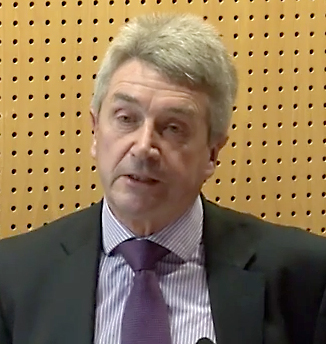Lloyd’s Register, the 260-year-old risk management and certification organisation, is competing with BRE by offering a Level 2 BIM accreditation system suitable for any company involved in BIM projects.
Just two firms have currently gained accreditation, which takes PAS 1192-2 as its core: AEC3, a consultancy run up by BIM Task Group member Nick Nisbet; and M&E designer and project management consultancy EDC.
In addition, Lloyd’s Register says it is assessing “a number of consultancies whose names are very familiar in BIM circles” for the accreditation, which might cost around £5,000 for a three-year validation for a business with more than one office.
BRE has so far only accredited one firm, the Manchester office of BDP, although it has told BIM+ that it is “close” to accrediting several more.
Terry Mundy, business development manager, told BIM+ that Lloyd’s Register had developed its programme over the past 12 months following the success of its first construction-specific product – the Build Offsite Property Assurance Scheme, which in effect allows properties built with offsite construction to be mortgageable.
“It’s based on PAS 1192-2 but that doesn’t address all the issues, so we look at practices on collaboration and risk management over and above PAS 1192-2. But one feature of the scheme is that we are very ‘user-friendly’, we don’t require any documentation upfront.”
There is a two-part process to the assessment. “Key reports” in the company undergo a “gap analysis” interview with Lloyd’s Register assessors, who determine to what extent the company’s processes meet LR’s requirements.
LR produces a report outlining the necessary improvement steps, and then makes a return visit to the company once it’s had a chance to upgrade its approach.
This first assessment is followed by an implementation audit, where assessors review the company’s systems and competencies in relation to a live BIM project.
Companies are then issued with a certification detailing the scope of services and the offices that have been accredited. The certificate is valid for three years, with LR staff returning annually for a “surveillance” visit.
Mundy say that he felt construction businesses had been “reticent” about seeking accreditation, believing that “the government would row back on the BIM mandate as it has with sustainability.” However, he said that interest had picked up since the beginning of 2015.
And he argued that LR’s status as a construction “outsider” could give its certification process credibility. “Unlike BRE, we’re not an integral part of the construction sector. We wanted to set up a credible evaluation process before we created awareness. As things evolve we will further develop the scopes of accreditation in the BIM sector.”

One feature of the scheme is that we are very ‘user-friendly’, we don’t require any documentation upfront.– Terry Mundy, Lloyd’s Register













